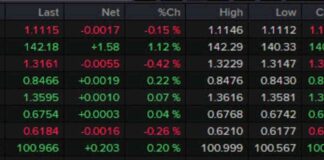Gold prices experienced a rebound from a two-month low on Monday, following a two-week pullback that saw a 6.5% decrease from its recent record high. The pullback found support around the $2540 zone, which is reinforced by the rising 100-day moving average.
The bounce in gold prices was driven by a pause in the recent strong rally of the US dollar, as well as resistance faced from the Fibonacci 50% level of the $2293 to $2790 upleg and the nearby daily Ichimoku cloud base. The current focus is on the initial resistance levels at $2600 and $2611, which were former strong support levels that have now turned into solid resistance levels.
To signal a potential reversal and a shift in near-term focus to the upside, a breach of these resistance levels is necessary. The recovery from last week’s significant 4.5% decline, which was influenced by signals of the Federal Reserve’s less aggressive stance on interest rate cuts, still requires more clarity on the central bank’s rate trajectory.
A sustained break above $2600 is needed to alleviate downside pressure, with further technical barriers at $2633 and $2663 serving as validation points for a potential upward trend. Additionally, the escalating geopolitical tensions between the US and Russia, particularly with regards to potential missile attacks and subsequent responses, could further support safe-haven assets like gold.
In terms of support levels, key areas to watch include $2564, $2536, $2524, and $2500. On the upside, resistance levels to monitor are at $2600, $2611, $2643, and $2663.
Overall, while the recent rebound in gold prices is a positive sign, further confirmation is needed to determine the direction of the precious metal. With ongoing geopolitical uncertainties and the evolving monetary policy landscape, gold remains a key asset to watch for investors seeking safe-haven opportunities.

















